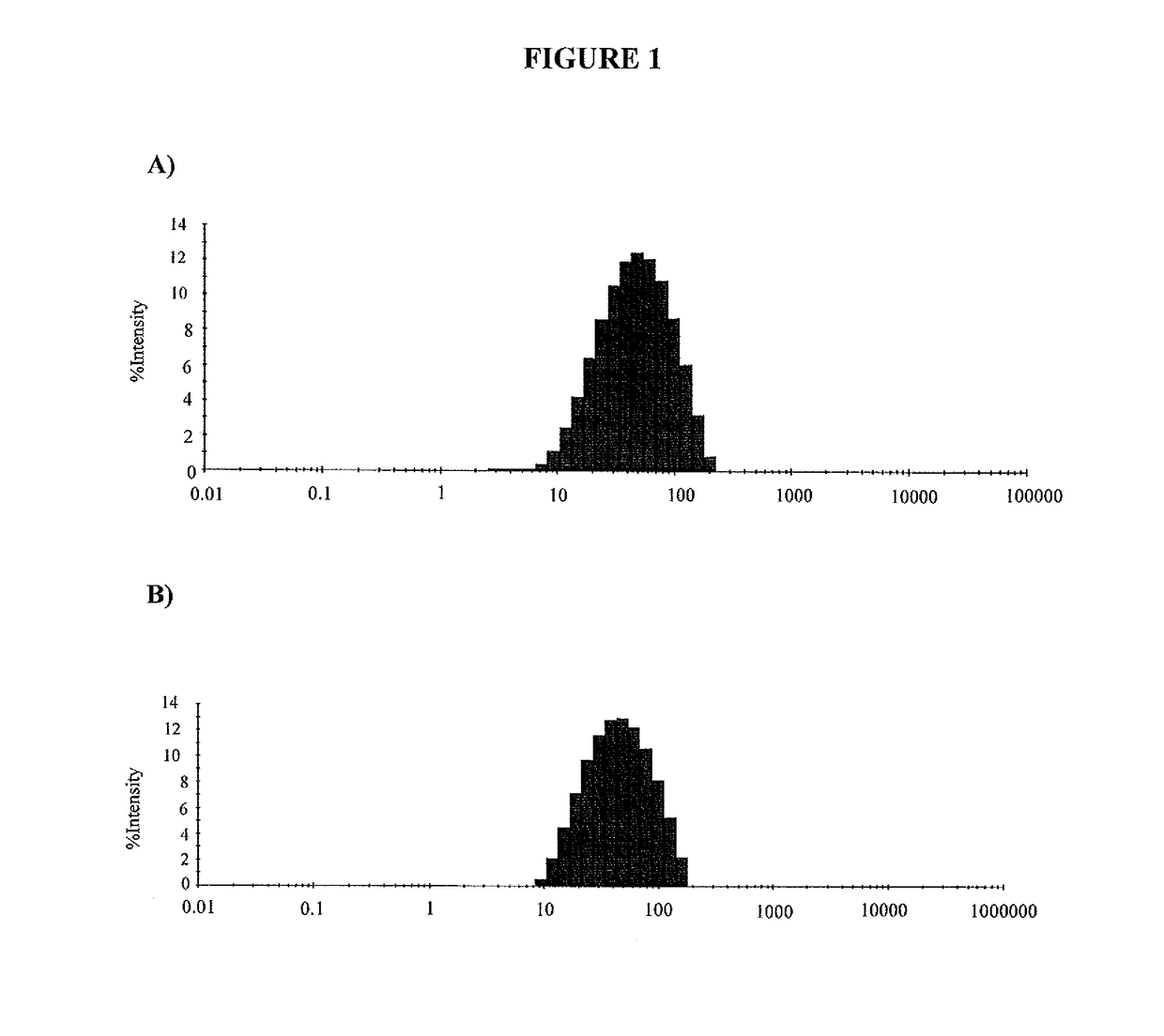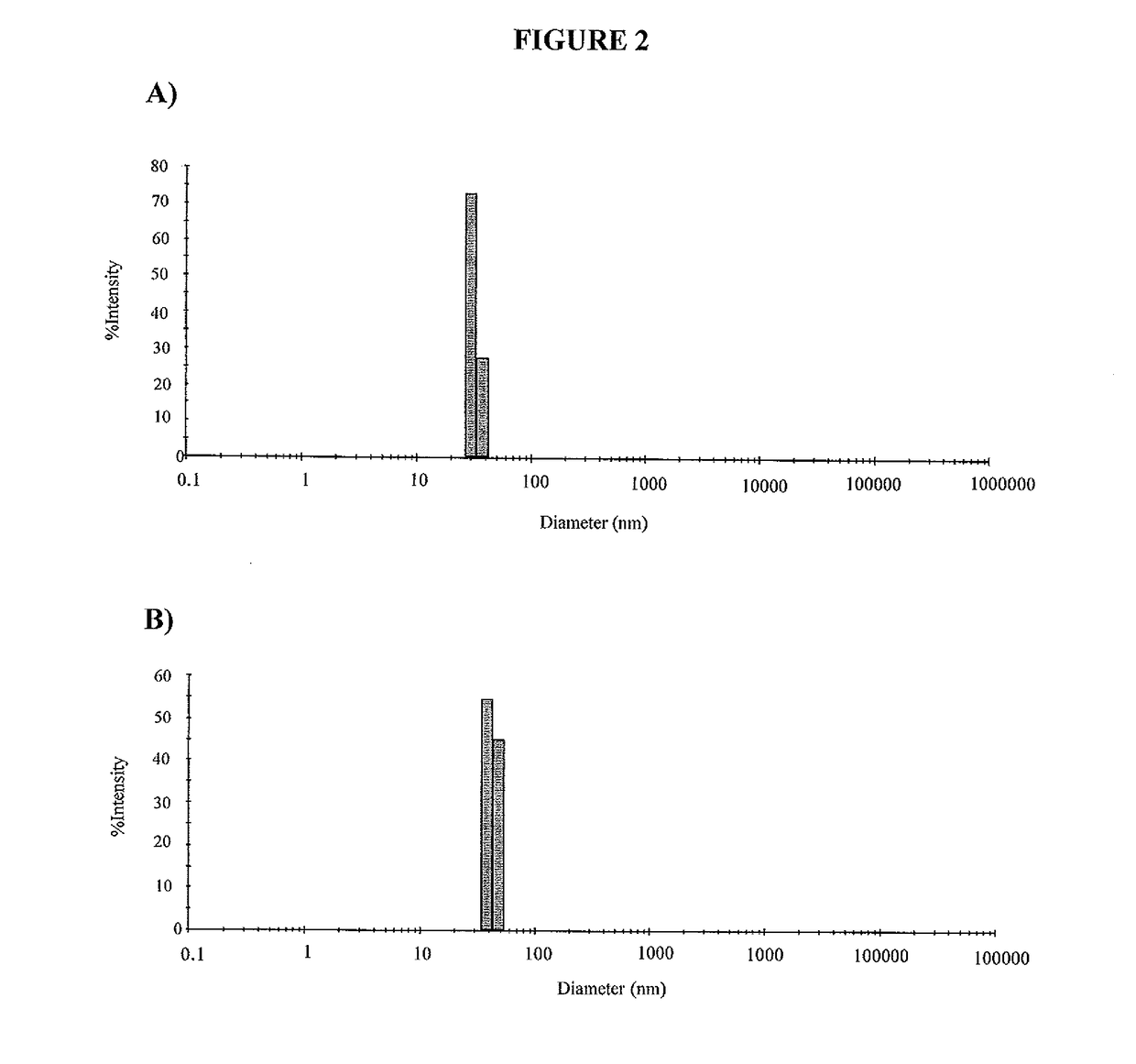Exosome isolation
a technology of exosomes and isolation, applied in the field of exosomes, can solve the problems of a plethora of peptides that cannot survive the exposed circulatory environment, study exosomes, and a high degree of labileness
- Summary
- Abstract
- Description
- Claims
- Application Information
AI Technical Summary
Benefits of technology
Problems solved by technology
Method used
Image
Examples
example 1
Exosome Isolation From Biological Samples Using a PEG-Based Method
[0073]Exosomes were isolated from various human and other mammalian biological samples as follows.
[0074]Blood samples were collected from healthy human subjects using red top serum collection tubes (e.g. BD, Ref #367812) and blue top plasma collection tubes containing sodium citrate (e.g. BD, Ref #369714) for serum and plasma isolations, respectively. For serum isolation, blood was allowed to clot for 1 hour at room temperature followed by centrifugation at 2,000×g for 15 min at 4° C. For plasma isolation, blood was spun down immediately after collection at 2,000×g for 15 min at 4° C. Plasma and serum was similarly collected from C57B1 / 6J mice and Sprague Dawley rats. Exosomes were then isolated from these samples, as well as from bovine whole milk (Natrel fine-filtered 3.25% milk). From this point onwards, all exosome sources were treated the same.
[0075]Serum, plasma and milk were spun at 2000×g for 15 min at 4° C. T...
example 2
Exosome Isolation From Cell Culture
[0082]Isolation of exosomes from cell culture (such as JawsII cells or Chinese hamster ovary (CHO) cells) was conducted using a similar procedure to that described in Example 1, including centrifugation of the sample, filtration, precipitation in PEG and solubilization in trehalose. In this case, however, the 0.22 μm filtrate was incubated with PEG at 4° C. overnight to enhance the precipitation of exosomes.
[0083]Exosome purity was similar to that achieved from the biological samples of Example 1. About 12-23 μg protein was obtained from about 1 mL of cell culture media.
example 3
Exosome Isolation From Human Biological Samples
[0084]Blood and urine samples were collected from healthy human subjects. For serum isolation, blood was allowed to clot for 1 hour at room temperature followed by spinning at 2,000× g for 15 min at 4° C. Similarly, urine samples were spun at 2,000×g for 15 min at 4° C. to remove any cellular debris. For plasma isolation, blood was spun down immediately after collection at 2,000×g for 15 min at 4° C. and treated with 5 ug of Proteinase K (20 mg / mL stock, Life Technologies) for 20 min at 37° C. From this point onwards, all samples (serum-1 mL, plasma-1 mL, and urine) are treated exactly the same.
[0085]The supernatant from the first centrifugation was spun at 2000×g for 60 min at 4° C. to further remove any contaminating non-adherent cells (optional). The supernatant was then spun at 14,000×g for 60 min at 4° C. (optional). The resultant supernatant was spun at 50,000×g for 60 min at 4° C. The resulting supernatant was then filtered throu...
PUM
| Property | Measurement | Unit |
|---|---|---|
| size | aaaaa | aaaaa |
| diameter | aaaaa | aaaaa |
| average molecular weight | aaaaa | aaaaa |
Abstract
Description
Claims
Application Information
 Login to View More
Login to View More - R&D
- Intellectual Property
- Life Sciences
- Materials
- Tech Scout
- Unparalleled Data Quality
- Higher Quality Content
- 60% Fewer Hallucinations
Browse by: Latest US Patents, China's latest patents, Technical Efficacy Thesaurus, Application Domain, Technology Topic, Popular Technical Reports.
© 2025 PatSnap. All rights reserved.Legal|Privacy policy|Modern Slavery Act Transparency Statement|Sitemap|About US| Contact US: help@patsnap.com



